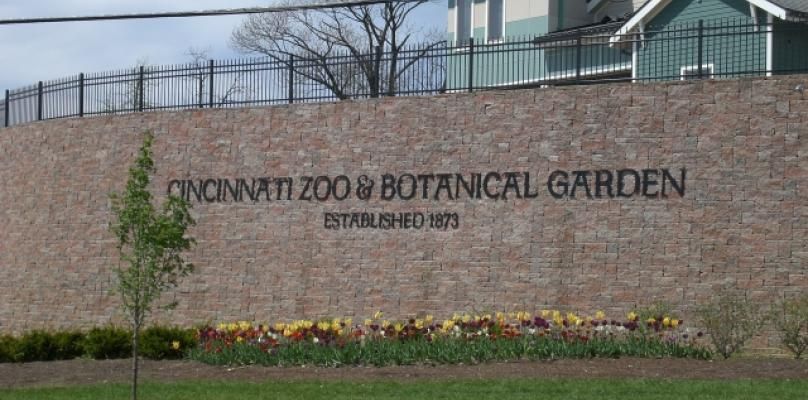Cincinnati Zoo- Cincinnati, OH
The challenge
The Cincinnati Zoo, always expanding, quickly found themselves developing new displays taking over the visitor parking lot. With attendance on the rise and parking becoming increasingly difficult for visitors, the Zoo purchased additional land with plans to relocate the entrance and add additional parking. Although acquiring the land allowed the Zoo to increase parking, exhibits and attractions, the challenge then became how to get visitors from the new parking lot, across busy street and into the Zoo which sat 22 ft. above the parking lot area.
The solution

ME Company designed a 25,000 sq. ft. AB Europa® segmental retaining wall which raised the site and supported a pedestrian bridge, allowing visitors to cross a busy street with no interruptions or safety concerns from city traffic. The wall also gave the zoo room for an expanded entry plaza and space to build the Historic Vine Street Village, a place where visitors can relax, shop and eat. This area is also the location for ticketing, guest relations, memberships and retail shops. Living up to it’s reputation as “the Greenest Zoo in America,” the Zoo sought after and achieved LEED NC Platinum certification for the village project, a first for the city of Cincinnati.
The results
Elevating the new entrance with the support from a tumbled ashlar patterned segmental retaining wall gives the appearance of hand-laid stones and the Zoo’s visitors a fresh and attractive new entrance while also allowing for easier access.
The new entrance had an added benefit as well – it enabled the zoo to continue it’s commitment to being green and preserving the environment. With the addition of the retaining wall, the zoo was able to expand its footprint and gain the additional space needed to collect and store rain water from underneath the permeable pavers that greets visitors as they enter the Zoo. There are over 30,000 sq. ft. of pavers that greet visitors as they enter the zoo which stores millions of gallons of rain water. Captured rainwater is used to irrigate the surrounding landscape.





